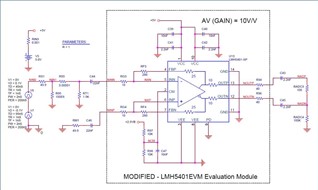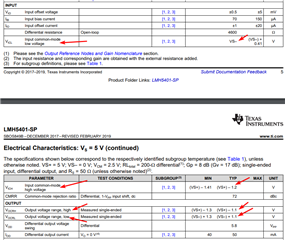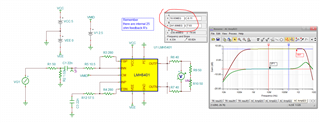Other Parts Discussed in Thread: LMH5401EVM, LMH5401,
We are trying to design a single-ended to differential driver using the LMH5401. The final design needs to have a 10 V/V gain. We are currently testing on the eval board (LMH5401EVM). The user manual for this eval board states that "Inputs and outputs must be biased as in the LMH5401 datasheet (SBOS710) specifications for proper operation." (section 3.2). However we are having trouble identifying these biasing conditions in the datasheet. We are currently using AC coupled inputs and outputs, but are unsure if the default common mode voltage is the correct bias. Are we supposed to add some extra biasing circuit to the inputs? Our initial circuit is attached for reference.




